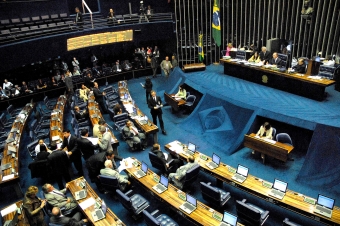Summary:
The activity was performed on a real and complex case that involved the legalization of public policy for the benefit of autism, which became known as "the case of autism."
Objective:
The goal was to bring the possibility of acting in this complex case with the objective of understanding the public policies and existing tools linked to them (budget process, etc.) in order to provide a critical view about public policies in relation to the Judiciary and the development strategy and procedural technique.
Dynamics:
- REQUIREMENTS: Classroom division into three component groups.
- INTRODUCTION TO THE DYNAMICS: The presentation of the main elements of the case of autistic and criteria for classroom development.
- DEVELOPMENT OF THE DYNAMICS:
Step 1: "formulating strategy and the initial request".
Based on the case information it was requested to the students the writing draft of the strategy for routing problem presented, assuming that the father of autistic was attended by students already providing the information collected during the civil investigation launched by the Public Ministry (attached file).
Step 2: "the claim brought by the PM and the sentence" (attached file).
At this stage, the students have access to the claim brought in the actual case and to the strategy adopted by the PM and should criticize it, considering the reflections made in the previous step on possible strategies to be adopted for the formulation, execution and legalization of public policies.
Step 3: report about the implementation phase of the case and other related questions. (file in attachment).
In this last stage, the students get to know the content of the sentence handed down by the court and may criticize it, even if weighting judgment promoted the development of public policy. They should also consider strategies to promote their implementation, questioning how could its liquidation/individual execution happen and raising the issues pertaining to the implementation of collective decision.
- END OF THE DYNAMICS: With the feedback from the professor about the development of the case in the judiciary, they should compare it to the development of the case in class, pointing out the strengths and weaknesses at each stage.
- ATTENTION IN THE CLASSROOM: It is important to make a division of the cycles in detail taking care for the discussion does not forward out of the presented problem, demanding attention and rigor of the professor.
The groups must have, at most, three components to enable discussion and engagement of all, and - in divergence - ensure that there is no draw in the group.
Evaluation:
- FEEDBACK: It was held in the classroom after each step and by correction of the questions addressed in writing at the groups.
- GRADE EVALUATION: It was evaluated the whole process on the quality and engagement in oral discussions and written material produced.
Observation:
Copyright from the cover page image (cropped):
Image: "Famille Rumpf", 1901, painter: Lovis Corinth, available by the Wikimedia Commons user "Dcoetzee", image in public domain.





